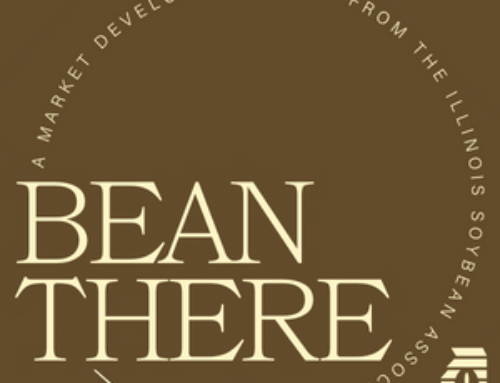By: Jill Parrent
In this multi-part series, we will identify key points will which range from a consistent supply to obtaining a quality product to sustainability for an Illinois soybean farmer who is selling their product to international buyers that specifically desire U.S. soy.
The importance of sustainability and conservation keeps growing, and these practices likely won’t be leaving anytime soon. Trade is important and the buyer is very interested in where the soybeans were grown and ecological practices used in growing them. Is the producer using water quality measures to ensure the runoff is decreasing? Are the microbes in the soil improving? What is the next step to ensure soybeans can grow to their potential? What sustainability measures are being utilized to ensure this can all happen? These are all questions that must be answered when farmers push towards sustainability.
These questions can bring about thought ideas for farmers who grow soybeans when they think about the land they grow the soybeans on, the potential for erosions, and even the soil quality with which they have to work.
The turning point for sustainability may have come around in the 1930’s, the time of the Dust Bowl. During the Dust Bowl, a total 23.5 million acres of land and 7.5 inches of topsoil were lost. From this great ecological tragedy, lessons were learned, and conservation farming practices became vital. We have worked to improve the evolving sustainability measures, ensuring that not only currently, but the future generations have the ability to farm the land. This one event changed the protectory of farming as we know it today.
Today, those sustainability measures are continued and built upon, and customers want to know exactly where the soybeans they are purchasing are coming from within the U.S. The U.S. has created a standard to showcase the importance of quality, sustainable products.
International buyers look to U.S. Soy Sustainability Protocol (SSAP) for the way that U.S. soybean producers’ plant, grow, and harvest their crops. This process is a certified aggregate approach audited by third parties that verifies sustainable soybean production at a national scale. The U.S. approach is quantifiable, and results driven with mass balance international verification available. This unmatched protocol entices international buyers with the quality of sustainable product they receive. The SSAP is one way that U.S. farmers demonstrate their commitment to sustainability and continuous improvement. This verification of sustainability is vital to putting U.S. soybean farmers at the top.
As farmers work towards excellent practices that are desired in all realms of agriculture, they need to focus on the goals of being the best stewards of the land they farm. Each generation can move forward in their pursuit of creating a safe and sustainable environment as it’s a continual process. Farmers must look at the overall picture – from soil health to water quality to a value product.
U.S. soybean farmers practice some of the most innovative and environmentally sounds methods to protect their natural resources in the world. Because of the buyers’ desire for sustainable products, implementing sustainability practices can enhance U.S. farmers ability to sell their soybeans internationally. Consumers are becoming concerned about where their products are coming from, wanting to ensure they come from a safe, sustainable, conservation-focused environment.
